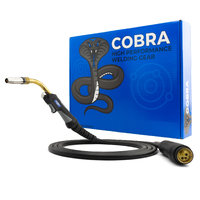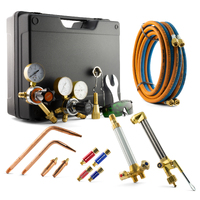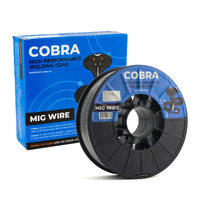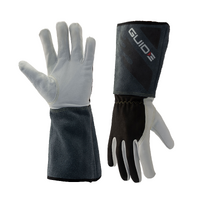MIG Wire
Author: Hampdon - Welding Equipment Online
MIG Wire
Metal inert gas (MIG) welding is a welding process in which an electric arc forms between a consumable MIG wire electrode and the parent metal, heating the parent metal and causing it to melt and join. MIG wire is the consumable used in MIG welding, it is the filler or glue that joins the two pieces of material together.
There are a number of types of MIG wire, including:
- Stainless steel
- Ferris material
- Aluminium
- Nickel
- Chromium
- Cobalt
- Copper
- Hastelloy
- Inconel
- Molybdenum
- Tantalum
- Titanium.
MIG wires are gas-shielded electrodes; the weld gun continuously feeds wire from a spool when the user presses down on the trigger. The weld gun supplies a shielding gas along the wire that protects the metal from any impurities present in the air. It is widely accepted that MIG results in a cleaner and better looking finish.

The importance of quality MIG wire
At Hampdon, we recognise the importance of using a high quality standard of MIG wire and we regard it as a way to save the additional costs associated when using a poorer quality wire, which will inevitably result in more post-weld operations, such as cutting, forming, surface and joint preparation, in addition to pre-heating, cleaning, tacking, grinding and painting.
A good MIG wire will be consistent in structure and size which will give a steady flow, penetration and weld appearance. All MIG wire provided by Hampdon is produced to AWS or ASME standards and can be supplied with a batch certificate of conformance. Our MIG wire is of a high quality and will save both money and time.

What to consider when choosing your MIG wire?
When choosing your MIG wire, parent material thickness, type and position are essential. Once the diameter of wire has been chosen appropriate to the thickness, the correct tip wire is important to maintain a constant current from the tip to the wire. If the wire is too narrow, arcing will occur between the wire and the inside diameter of the tip. Ultimately this erodes the tip and impacts on welding performance.
An overly wide MIG wire can result in excessive feeding force, which may lead to the tip becoming blocked, the wire may slip and this in turn forces the welding operation to be temporarily halted or burn back.
We can advise you as to the best MIG wire selection for your MIG gun, saving you both time and money.

Types of MIG wires
The type of MIG wire you choose will, as previously mentioned, depend on the type of base metal.
The next step is to decide what form it will take and our wires include spools and filler rods. We also supply stick electrodes, which are ideally suited for joins where there is a wider fit.
Whatever you are welding, call Hampdon for expert advice and we can find the perfect MIG wire for you.













